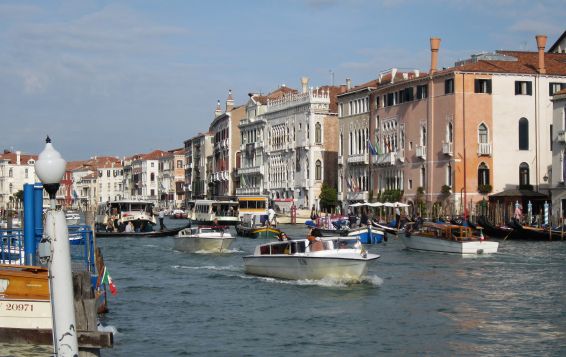
Following the death of German tourist Dr. Joachim Reinhard Vogel, the city went into a more-than-usually-intense spasm of introspection and finger-pointing, which I suppose could be called “extrospection.”
The urgent need to release the bottleneck at the Rialto Bridge is agreed upon by everyone.
The urgent need for everyone other than whoever is speaking to change is also universally agreed-upon.
So far, the mayor is re-examining the many and varied boat-parking permissions granted over time, the boats concerned having hardened up the narrowest part of the Grand Canal like plaque on arteries. And we all know what plaque does, and how very good it is for you and your general well-being, otherwise known as survival. It’s the same with the narrowing of the already narrow space at the bridge.
I admit that I have not been tracking every little blip on this issue. I know that the Vaporetto dell’Arte is slated for removal (in November — no rush). And the garbage-collection company, Veritas, has submitted a radical plan for removing its barges from the area. I don’t know many there were; perhaps it means they’ve removed three. In any case, the right spirit is at work.
Except it’s not working hard enough. I hope it will not be thought churlish of me to note that a few days ago, a vaporetto backing up (same spot as the tragic accident) ran into a taxi which was standing still, at the same spot where the fatal gondola had also paused, for the same reason: To wait for the traffic to abate in order to avoid an accident. There were no injuries except to the taxi.
A recent article in the Gazzettino reported this (translated by me):
“The latest confirmation of how, a month after the tragedy, nothing has changed comes from a video made by Manuel Vecchina and put on YouTube and the site of the Gazzettino.
http://video.ilgazzettino.it/nordest/traffico_acqueo_a_venezia_sempre_il_caos-13342.shtml
A good 3,062 photographs, shot Monday, Sept. 2 near the Rialto Bridge between 8:47 and 18:44, and then put into a film of 4 minutes and 24 seconds, synthesize these ten hours of hellish traffic, with 1,615 boats in various movements, among which are 700 taxis, 219 vaporettos, 216 transport barges, 209 gondolas, 168 private boats, 39 airport launches, 18 “Vaporetto dell’Arte,” 13 ambulances, 17 police boats, and 2 of the firemen.”
I think we can agree that 2 fire-department boats and 13 ambulances can get a pass.
Otherwise, full steam ahead.
